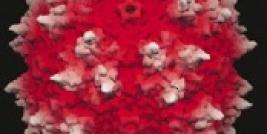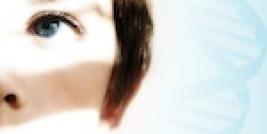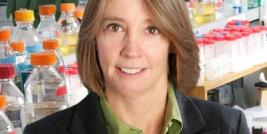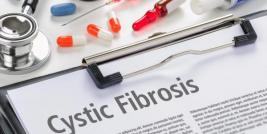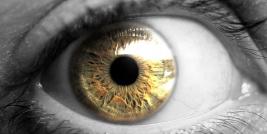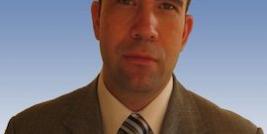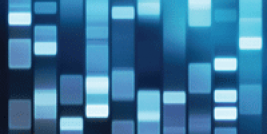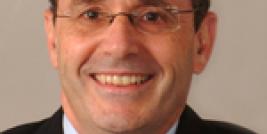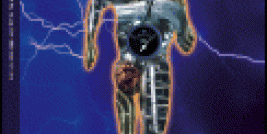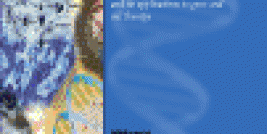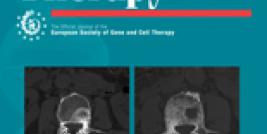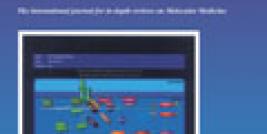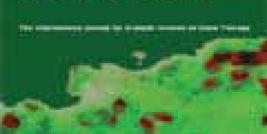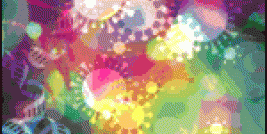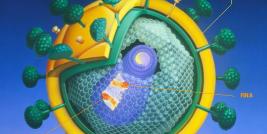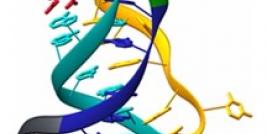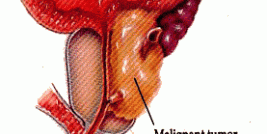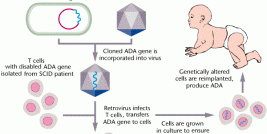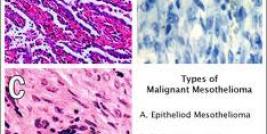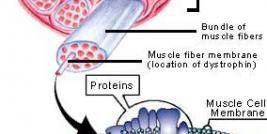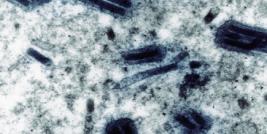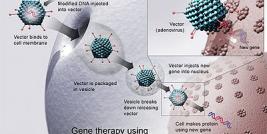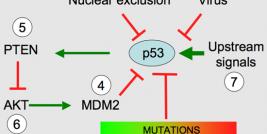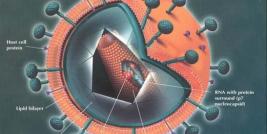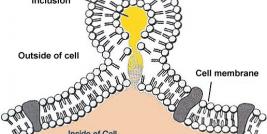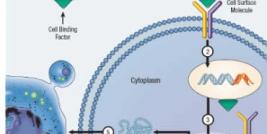Article by: Peiman Hematti (1) and Mikko O. Laukkanen (2)
Mouse hematopoietic stem cell (HSC) transplantation is a well-established in vivo model system to study various factors affecting normal and pathologic blood cell development. Based on the currently accepted classification primitive HSCs are multipotent adult stem cells that can be divided developmentally into two different stages: long-term HSCs and short-term HSCs (1). However, bone marrow contains largely heterogeneous and functionally distinct subpopulations of hematopoietic stem and progenitor cells separated by their self-renewal ability, clone size, differentiation capacity, migration patterns, and primitiveness (2). Due to this variability the reproducible isolation of HSCs representing biologically homogenous population is a very difficult task. Therefore, the characterization of HSCs is based on the in vitro functional assays, such as methylcellulose colony forming assay, or in vivo studies like competitive repopulation unit assay and the ability to form hematopoietic chimera after transplantation.
Even though mouse hematopoietic system closely resembles human hematopoietic compartment to date the above-mentioned classification apply only to mouse models. Since mouse HSCs are well characterized and significantly more economic to work with as compared to large animal models such as dogs, non-human primates, or human HSCs, they have been used as the model system of choice in studies focused on ontogeny of blood cells, pathogenesis of blood diseases, repopulation of stem cell niches, mobilization of HSCs, differentiation, and the effect of external factors such as chemicals and radiation (3). HSCs have been also used frequently for gene therapy applications to deliver the therapeutic genes to bone marrow compartment. However, transduction of HSCs with the commonly used retroviruses faces two main challenges. First, the number of primitive HSCs is low even in the cell culture conditions. The solution to this could be to use high titer virus preparations enabling increased multiplicity of infection (MOI) usage in the culture. Recently, however, the non-random pattern of retrovirus integration in specific loci in genome has been shown to cause genetic aberrations, eventually contributing to the development of oncogenic phenotype (4,5). Second, primitive HSCs are mostly quiescent or cycling in low frequency (6) and thus limiting the use of retroviruses since their infectivity depends on cell proliferation. While it is important to use cytokines to force the HSCs to enter the cell cycle, the cytokine exposure potentially initiates the stem cell differentiation and the loss of stemness. It is also noteworthy that the most primitive progenitor cells, which have the highest stem cell activity and repopulation ability, are mainly found in G0 phase in cell cycle, whereas cells that are in S/G2 or in M phase have a minimal engraftment potential, which could potentially affect the homing and engraftment of HSCs after transplantation (7,8).
Reagents and materials needed
Mice: 4-8 weeks old donor and 6-9 weeks old recipient mice. Antibodies: Ly5.2 FITC, Ly5.1 PE, Sca1, cKit, and appropriate isotype controls. Antibiotics: Neomycin sulfate (Sigma N1876) or Polymyxin B sulfate (Sigma P1004) Solutions: Acidified water pH 3.0, PBS, HEPES/HBSS, 2% PBS/BSA, 1% formaldehyde 2%BSA/PBS, 70% EtOH, DMEM with penicillin streptomycin. Reagents: Ficoll Paque PREMIUM 1,084 (GE Healthcare 17-5446-02), Retronectin (Takara T100A), Hexadimetrine promide (Sigma H9268). Cytokines: Mouse Hematopoietic Stem Cell Expansion Kit Cytokine Panel (R&D SMPK9). The Kit contains thrombopoietin (TPO), Flt-3 ligand, and stem cell factor (SCF) (catalog numbers 488-TO, 427-FL, and 455-MC, respectively). Note: the cytokines are working well only for 3 months from the time of purchase. The final concentration of the cytokines in the cell culture medium should be 100 ng/ml each. Equipments: Scissors, forceps, syringes, eppendorf tubes, gauze, 6-well cell culture plates, 0.22m filter microfilters, cell culture dishes.
Preparation of the cell culture dishes
Retronectin, which is a recombinant human fibronectin fragment, contains three functional domains: 1) RGDS motif containing domain for cell adhesion, 2) a heparin binding domain that binds several different viruses, and 3) a CS-1 sequence that binds the interegrin receptor VLA-4. The retronectin coating of the cell culture plastic surfaces enables the adhesion of primitive HSCs to the dish and increases the virus-mediated transduction of the cells (9). For the coating, first dilute the retronectin into a small volume (1-2 ml) for filtration (0.22m filter) and then add sterile PBS to make 100 ng/ml working solution. Cover the dish with the retronectin solution and incubate minimum 2 hours in the hood. The longer incubation in the cell culture incubator increases the attachment of the retronectin on the dish. After coating block the dishes for 30 minutes with sterile 2% PBS/BSA at room temperature and wash by rinsing 2-3 times with HEPES/HBSS before use. Do not let the dishes to dry. The dishes can be stored at +4 °C tightly wrapped in foil.
Isolation and culture of the bone marrow cells
All the following steps are done in the room temperature. Since primitive hematopoietic progenitor and stem cells are sensitive to a number of external factors it is vitally important that the isolation procedure is done as rapidly as possible avoiding unnecessary manipulations of the cells. The donor mouse is sacrificed humanely according to established animal care protocols approved by animal care committees and regulatory agencies, rinsed with 70% ethanol, and moved to laminar hood for bone marrow isolation from both hind limb tibias and femurs (Figure 1A). Cut the skin quickly with the scissors to expose the limbs and remove the muscles surrounding the bones (Figure 1B-F). Since the bones should preferably be completely cleared from muscles we use gauze to remove the residual tissues (Figure 1G-H). Once the femur and the tibia are separated carefully cut the ends of the bones close to the joints by scissors to open the bone marrow cavity (Figure 1I). Attention should be paid not to cut too much of the bone since the most primitive progenitor cells are located at the edges of the bone. Subsequently puncture the bone marrow cavity carefully with a needle. Once the cavity is open from both the sides of the long bones, flush the bone marrow out by injecting DMEM with a syringe into the cavity until it appears transparent (Figure 1J). In the intact bone the bone marrow is visible as reddish line, which then disappears once the marrow is flushed away.
The isolated bone marrow cells should be dissolved from clumps carefully and cells should be separated from the matrix material by pulling the cells through 19G needle. The bone marrow cells are then centrifuged for 5 minutes with 1500 rpm, the cells are resuspended into a maximum of 1 ml of DMEM, and loaded carefully on the gradient (500 ml Ficoll in 1.8 ml eppendorf tube since the use of small eppendorf tubes instead of 15 ml conical tubes improves the yield of the isolation.). Then, centrifuge for 30 minutes at 1800 rpm and collect the buffy coat located above/at upper part of the Ficoll layer. Since most of the red cells are precipitated to the bottom of the tubes the additional red cell lysis is not necessary. Wash once with PBS and prepare the cells for counting.
Despite many years of research still there is no good methodology to maintain the stemness of HSCs in vitro as they undergo spontaneous differentiation when theyr are separated from their in vivo niches. However, HSCs can be cultured in an undifferentiated state for a few days on retronectin pretreated cell culture dishes in high quality medium supplemented with fetal bovine serum (FBS), penisillium-streptomycin, and cytokines. A commonly used cytokine combination include stem cell factor (SCF, steel factor, c-Kit ligand), which is needed to maintain the stemness of HSCs, throbopoietin (TPO) and Flt3 ligand, which both are promoting the cell proliferation (10,11,12).
Plate the cells (2x105-4x105 cells/ml) on freshly prepared retronectin coated dishes in DMEM 10 % FBS/penicillin streptomycin with cytokines TPO 100 mg/ml, Flt-3 ligand 100 mg/ml, and SCF 100 mg/ml. Hematopoietic cells should be plated daily with fresh medium and cytokines at the density adjusted to 2x105-4x105 ml to minimize the apoptosis and differentiation of the HSCs.
The retroviral or lentiviral manipulation of the cells should be done on three consecutive days with a fresh high titer virus. To increase the transduction efficiency it is advisable to incubate retro- or lentivirus viral supernatant on the coated culture dish for 2-4 hours in the hood to let the virus to bind the retronectin. The most primitive progenitor cells are mostly bound to the retronectin coated surface whereas the more differentiated cells grow as suspension in the cell culture medium. Remove the viral supernatant before adding the isolated hematopoietic cells into the culture dish together with the fresh virus (MOI 5-10) and hexadimetrine promide (4-8 mg/ml) that neutralizes the charge between the virus and the cell surface.
FACS analysis of the cells
The presence of primitive Sca1+/cKit+/Lin- progenitor cells from the graft before transplantation can be determined by flow cytometry. Count the cells and use minimum of 1x105 cells for the staining. Wash and resuspend the cells into 100 ml of 2%BSA/PBS and add appropriate amount of antibody, mix by pipetting and incubate on ice for 10 minutes in dark. Wash the cells 1-2 times with 2%BSA/PBS and either analyze immediately or fix the cells with 1% formaldehyde 2%BSA/PBS. After fixing the cells can be stored for 1-2 days at 4 degrees. Longer storage affects the integrity of the cells and yields artefacts.
To characterize the level of chimerism after the transplantation we recommend using donor/recipient CD45.1 vs. CD45.2 mice or alternatively male vs. female animals using FACS and real time PCR.
Preparation of the recipient mice for transplantation
Since the irradiation is damaging to the intestinal tissues the mice become sensitive to internal infections. Therefore the mice should be given antibiotics ad libitum, such as 0.5-1 mg/ml neomycin sulfate and 500 U/ml Polymyxin B sulfate. Alternatively, the intestinal pH of the mice can be decreased to protect the animals against microbes by giving autoclaved acidified water (pH 3.0) for two weeks prior the irradiation, which should be continued for two weeks after the irradiation. Additionally, the animals should be kept in a pathogen free facility
Irradiation
Irradiation source: e.g. Gammacell 40, Atomic Energy of Canada Ltd; Cesium 137
- Turn on the machine
- Put mice into the carousel cage
- Adjust the needed irradiation dose and set up the time: (a) How many minutes is needed to irradiate for the wanted dose. (b) The dose should not exceed 250 cGy per minute.
- Initiate the irradiation, e.g. 450 cGy for 2 minutes
- Let the mice to rest for 3-6 hours before the second irradiation dose
- Leave mice to rest in their cages for 8-18 hours to reduce the cytokine storm and increased apoptotic response caused by the TBI before injecting the graft.
Myeloablative irradiation dose is approximately 900 cGy that is given in two separate doses with 3-6 hour interval to protect the internal organs and gastrointestinal system from severe damages. If the irradiation is given in one single dose, the maximum is 850 cGy. However, the dose of irradiation could be different for different strains of the mice and therefore should be optimized depending on the animal model used.
Transplantation of the cells
Transplantation of the mice should be done with fresh cells isolated from the bone marrow or collected from the cell culture dish. If the transplantation is meant to characterize the minimum amount of bone marrow needed for animal survival, it is recommended that the Ficoll purification step is skipped in the cell preparation process. This reduces the loss of primitive progenitor cells and the need to use competitor cell population.
The cells are injected in 200 ml of PBS into the tail vein using butterfly needle (30G). It is vitally important to inject the cells slowly to avoid complications like clotting of the cells into the lungs or other internal organs. Place the recipient mice back to the cages and analyze the chimera development on weekly basis by FACS analysis. For the analysis collect 50-100 ml of blood from the tail and mix with 300 ml of 2%BSA/PBS. Divide the cells equally to three tubes, add 2 ml of antibodies (Ly5.2 FITC, Ly5.1 PE, and isotype control), and incubate on ice for 10 minutes. Wash the labelled cells twice with 2%BSA/PBS, filtrate, and analyze by flow cytometry.

Figure 1A. The mouse is sacrificed and rinsed with 70% Ethanol. B-D. The skin is cut with scissors on the hip and removed quickly by fingers. E. The hind limb is cut off with scissors carefully avoiding damaging the bones. F-H. The muscle tissue is firstly removed with scissors and then with gauze until all tissue is removed from the bones. The bone marrow inside the femur and tibia is visible as a reddish line. I. The edges of the bone are cut gradually to expose the bone cavity. Note that the most primitive progenitor cells are located at the edges of the bones. J. The bone marrow is removed by injecting medium through the bone cavity until the bone appears clear.
Acknowledgements
PH is supported by the NIH grant NIH HL081076 K08
References
1. Morrison et al. (1994). The long-term repopulating subset of hematopoietic stem cells is deterministic and isolatable by phenotype. Immunity 1: 661-673. PMID: 7541305
2. Sieburg et al. (2006). The hematopoietic stem compartment consists of a limited number of discrete stem cell subsets. Blood 107: 2311-2316. PMID: 16291588
3. Chen et al. (1997) Delineation of the human hematolymphoid system: potential applications of defined cell populations in cellular therapy. Immunological Reviews 157: 41-51. PMID: 9255620
4. Cohen etl al. (1979). Integration of the DNA of mouse mammary tumor virus in virus-infected normal and neoplastic tissue of the mouse. Cell 2: 333-345. PMID: 222456
5. Hacein-Bey-Abina et al. (2003). LMO2-associated clonal T cell proliferation in two patients after gene therapy for SCID-X1. Science 302: 415-419. PMID:14564000
6. Dexter et al. (1977). Conditions controlling the proliferation of haemopoietic stem cells in vitro. Journal of Cellular Physiology 91: 335-344. PMID: 301143
7. Gothol et al. (1997). Functional heterogeneity of human CD34(+) cells isolated in subcompartments of the G0 /G1 phase of the cell cycle. Blood 90: 4384-4393. PMID: 9373249
8. Glimm et al. (2000). Human hematopoietic stem cells stimulated to proliferate in vitro lose engraftment potential during their S/G(2)/M transit and do not reenter G(0). Blood 96: 4185-4193. PMID: 11110690
9. Hanenberg et al. (1996). Colocalization of retrovirus and target cells on specific fibronecting fragments increases genetic transduction of mammalian cells. Nature Medicine 8: 876-882. PMID: 8705856
10. Bernstein et al. 1991. Recombinant human stem cell factor enhances the formation of colonies by CD34+ and CD34+lin- cells, and the generation of colony-forming cell progeny from CD34+lin- cells cultured with interleukin-3, granulocyte colony-stimulating factor, or granulocyte-macrophage colony-stimulating factor. Blood 77: 2316-2321. PMID: 1710148
11. Kobayashi et al. Recombinant human thrombopoietic (Mpl ligand) enhances proliferation of erythroid progenitors. Blood 86. 2494-2499. PMID 7545458 12. Lyman et al. Molecular cloning of a ligand for the flt3/flk-2 tyrosine kinase receptor: a proliferative factor for primitive hematopoietic cells. Cell 75: 1157-1167 PMID: 7505204
Author Affiliations:
- University of Wisconsin-Madison School of Medicine and Public Health, Wisconsin, USA
- Fondazione IRCCS SDN, 80143 Naples, Italy

